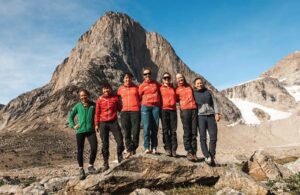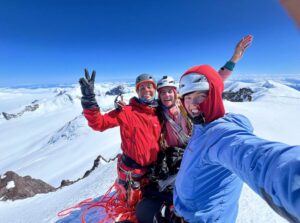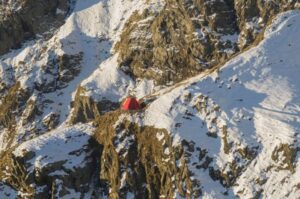When we’re not outdoors, we get our adventure fix by exploring social media and the web. Sometimes we’re a little too plugged in and browsing adventure reads can turn from minutes to hours. To nourish your own adventure fix, here are some of the best adventure links we’ve discovered this week.
Was This Yosemite’s Most Miserable Shiver Bivy? The South Face of Half Dome, one of Warren Harding’s finest masterpieces, is a 600m wall. Its upper half is a blank sea of white granite, void of any apparent climbable features. In the winter of 1986, three highly experienced Yosemite wall climbers survived for days in a blizzard, high on this South Face.
Beyond the Front Lines, Ukrainian Mountaineer Aids War Effort: One of Ukraine’s most celebrated mountaineers — currently seeking asylum in the UK — explains how climbing has (and hasn’t) helped with the tough choices forced upon him by the war. “We can prepare for the mountains. In a war, you never know where the next rocket will explode.”
The Colorado River Is In Crisis: As temperatures rise, the mountain snowpack that feeds the mammoth Colorado River is diminishing over time and melting earlier. That decreasing runoff is more quickly soaking into western Colorado’s parched terrain and evaporating into its hotter air. Less water is flowing downriver, depriving the ranchers, rafters, anglers, and the animals that depend on it.
Trauma in the wilderness
The Hardest Climb: A new support group based in Canmore, Alberta provides peer support for people who’ve experienced trauma in the mountains: guides, first responders, athletes, and anyone else in need. Mixing weekend warriors with some of Canada’s most accomplished mountaineers and climbers, the group is tearing down the silence that has traditionally shrouded trauma in outdoor sports. They call themselves Mountain Muskox, referencing the shaggy Arctic herd animals that protect themselves by forming a tight defensive circle.

The Mountain Muskox. Photo: Allison Seto
Why Do We Like to Read Stories About Death in the Wilderness? Freezing to death. Heatstroke. The excruciatingly painful sting of a box jellyfish, which can kill a person in under a minute. After writing the classic 1997 magazine piece Frozen Alive, Peter Stark became an expert on what it feels like to die in the wild. Outside magazine asked Stark why people are so interested in reading about it — and about his own close calls.
The First Rule of Bite Club? The odds of being attacked by a shark are less than one in 11 million, which makes it nearly impossible to find people to turn to when you become that one. Enter a support group of survivors called the Bite Club — the most exclusive club that nobody wants to join.
Wandering writer of the desert

Sanmao, Chinese desert explorer. Photo: Adventure Journal
Sanmao, Desert Explorer, Inspired Millions of Asian Women to Adventure: Inspired by stories she read in National Geographic magazine as a child, Sanmao left what she saw as a culturally repressive China to see the world. She eventually traveled to more than 55 countries, learned to speak multiple languages, and wrote voluminously. Her words provided escapism for readers back home who couldn’t hope to leave China themselves.






